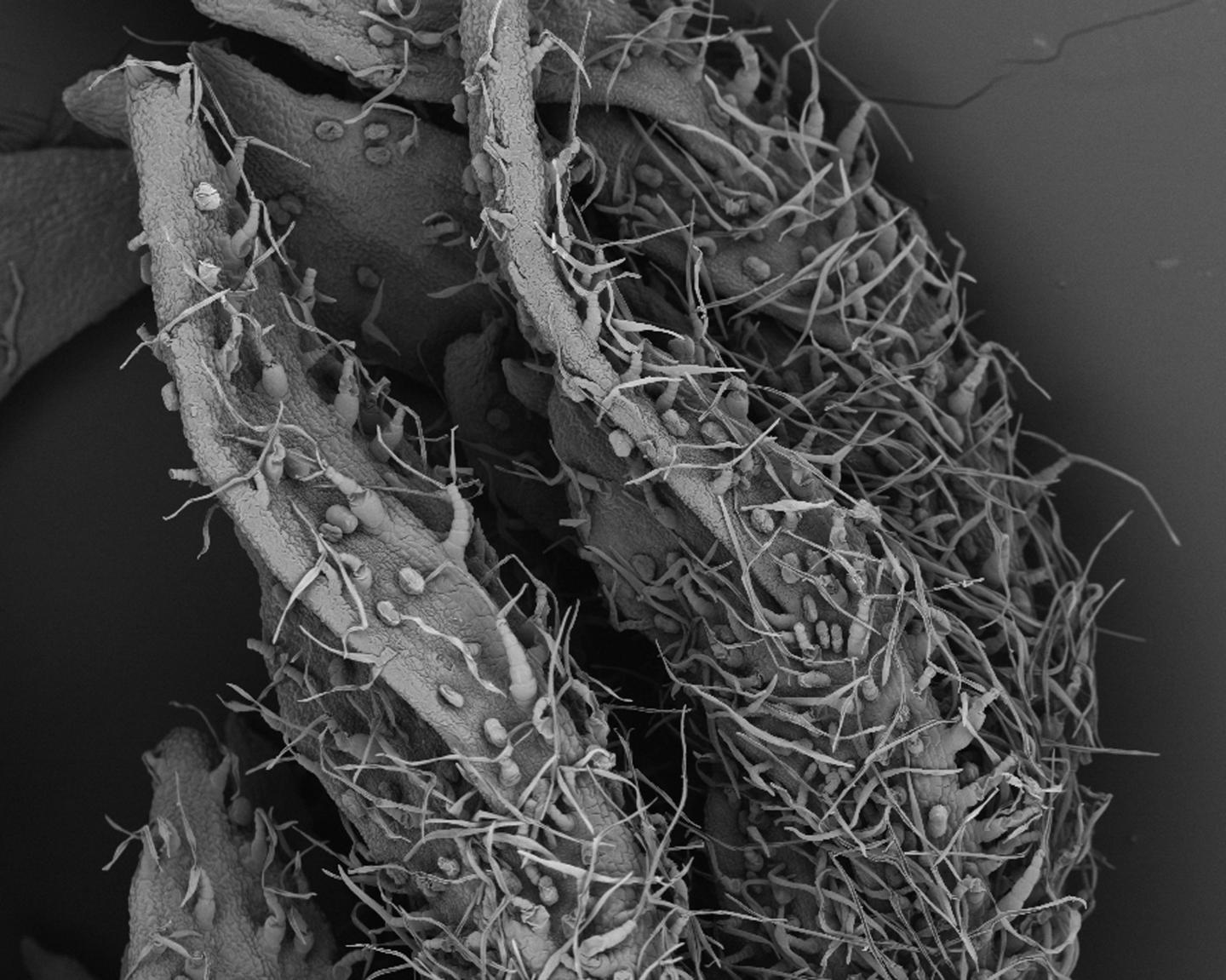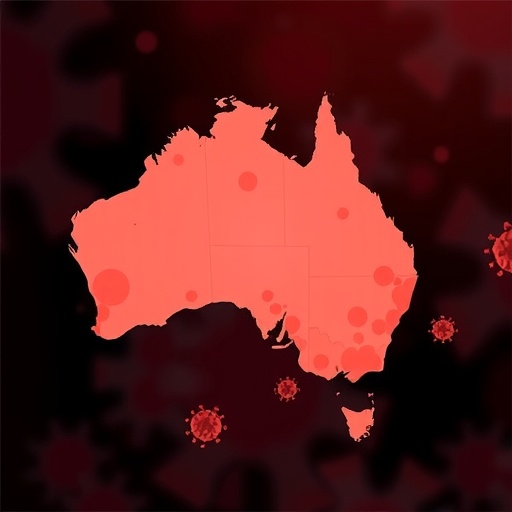
Credit: CRAG
Since the ancient times, mankind has used plants to treat diseases. An example is the plant Artemisia annua, used for over 2,000 years in traditional Chinese medicine to treat intermittent fevers. Nowadays, the artemisinin molecule – the active ingredient synthesized in the microscopic hairs (trichomes) of this plant – is the main component of malaria treatments worldwide. In fact, the Chinese scientist Youyou Tu was awarded in 2015 with the Nobel Prize in Medicine for the discovery of artemisinin and its application in therapies against malaria.
Regardless of artemisinin's effectiveness against malaria and other diseases caused by parasites and despite its anti-tumour potential, its usage faces a problem: the low content produced by the plant and the high cost of its chemical synthesis result in a scarce and expensive drug.
Now, an international research team led by researchers from the Centre for Research in Agricultural Genomics (CRAG) and Sequentia Biotech S.L. has been able to obtain, through genetic engineering, Artemisia annua plants that produce twice as much artemisinin. The work, published today in The Plant Journal, identifies a gene involved in the formation of plant trichomes and in the synthesis of terpenes, such as artemisinin. "We have discovered that the AaMYB1 gene has a dual function: it promotes trichome formation in the leaves and artemisinin synthesis inside the trichomes", explains Soraya Pelaz, ICREA researcher at CRAG and senior author of the article. "By manipulating this gene, we have managed to grow plants which contain much more artemisinin than their wild-type counterparts," she adds. Noting that 90% of malaria cases and 92% of deaths caused by this disease occur in sub-Saharan Africa, this finding could be a major step towards reducing the production costs of such a necessary drug.
The plant as a factory
This study is a perfect example of knowledge transfer. Luis Matias-Hernandez, first author of the discussed work, began to study the formation of trichomes in the model plant Arabidopsis thaliana when he was a postdoctoral researcher at the CRAG group led by Soraya Pelaz. The acquired insight made him think that the formation of trichomes could be manipulated in plants with industrial applications. For the past two years, and thanks to a Torres Quevedo contract, Luis Matias-Hernandez has been directing a line of research aimed at obtaining Artemisia plants that produce large amounts of artemisinin at the spin-out Sequentia Biotech, from which he keeps collaborating with CRAG.
"One of the main goals of Sequentia Biotech is to produce artemisinin of the same quality but at a lower cost. Our ambition is to reduce the price of the drug, so it can be accessible to everyone in the future", underlines Luis Matias-Hernandez. "We want to use Artemisia as a natural low-cost factory for antimalarials, and we are testing different strategies to do it," adds the researcher.
Beyond artemisinin
Collaborating with Peter E Brodelius, researcher at the Linnaeus University in Sweden, the scientists were able to identify the gene AaMYB1 among the array of genes expressed in Artemisia trichomes. At CRAG, the researchers designed transgenic plants that overexpressed this gene and found that they accumulated larger doses of artemisinin than non-genetically modified plants.
But the investigation went further. To confirm the role of the AaMYB1 gene in the formation of plant trichomes, the researchers searched for similar genes in the model plant Arabidopsis thaliana and found the gene AtMYB61. When this gene was overexpressed in the model plant, it also produced a higher amount of trichomes on its leaves, demonstrating that these genes play a key role in the formation of trichomes in evolutionarily distant species. Soraya Pelaz explains that "in addition to its role in Artemisia, the identification of this gene can also be useful for other plants whose trichomes produce substances of interest". Luis Matias-Hernandez adds "There are many plants that produce substances of interest in their trichomes. For example, menthol and thymol are terpenes produced in the trichomes of mint and thyme, respectively."
###
About the Centre for Research in Agricultural Genomics (CRAG)
The Centre for Research in Agricultural Genomics (CRAG) is a centre that is a member of the CERCA system of research centres of the Government of Catalonia, and which was established as a partnership of four institutions: the Spanish National Research Council (CSIC), the Institute for Agri-Food Research and Technology (IRTA), the Autonomous University of Barcelona (UAB) and the University of Barcelona (UB). CRAG's research spans from basic research in plant and farm animal molecular biology, to applications of molecular approaches for breeding of species important for agriculture and food production in close collaboration with industry. CRAG has been recognized as "Centro de Excelencia Severo Ochoa 2016-2019" by the Spanish Ministry of Economy and Competitiveness.
The work published on The Plant Journal, which has also involved researchers from Linnaeus University (Sweden) and Shanghai Jiao Tong University (China), has been funded by projects of the Spanish Ministry of Economy and Competitiveness through ERDF funds and through a COST action of the European Union.
Reference article
Matias-Hernandez, L., Jiang, W., Yang, K., Tang, K., Brodelius, P. E. and Pelaz, S. (2017), AaMYB1, and its orthologue AtMYB61, affect terpene metabolism and trichome development in Artemisia annua and Arabidopsis thaliana. The Plant Journal. doi:10.1111/tpj.13509
Media Contact
Zoila Babot
[email protected]
34-609-088-368
@CRAGENOMICA
http://www.cragenomica.es
############
Story Source: Materials provided by Scienmag





